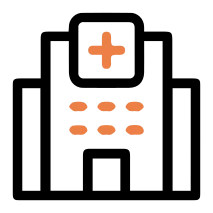Swallowing is a complex process that involves a coordinated effort of muscles and nerves to move food, liquid, and saliva from the mouth to the stomach. This process is essential for proper nutrition and hydration. When someone experiences difficulty swallowing, it can lead to a condition known as a swallowing disorder or dysphagia. Dysphagia is not a disease itself but a symptom of an underlying condition. Swallowing disorders can range from mild to severe and can significantly impact a person’s quality of life.
In this article, we will explore the causes, symptoms, diagnosis, and treatment of swallowing disorders, as well as answer frequently asked questions to help you better understand this condition.
What is a Swallowing Disorder?
A swallowing disorder or dysphagia refers to difficulty in swallowing or the sensation of food or liquid getting stuck in the throat or chest. It can occur at any stage of the swallowing process: when food is in the mouth, traveling down the esophagus, or entering the stomach. Individuals with swallowing disorders may experience discomfort, choking, or coughing while eating or drinking.
Swallowing disorders can affect people of all ages, but they are more common in older adults or individuals with certain medical conditions. In some cases, dysphagia can lead to malnutrition, dehydration, and aspiration pneumonia (a lung infection caused by inhaling food, liquid, or saliva into the lungs).
Causes of Swallowing Disorders
There are several possible causes of swallowing disorders. These can range from neurological conditions to physical blockages or muscle dysfunction.
1. Neurological Conditions
Neurological disorders can interfere with the brain’s ability to send signals to the muscles involved in swallowing. Some common conditions that can cause swallowing problems include:
- Stroke: A stroke can affect the areas of the brain responsible for coordinating the muscles involved in swallowing. Depending on the severity of the stroke, individuals may experience partial or complete difficulty swallowing.
- Parkinson’s Disease: This neurodegenerative disease affects the brain’s movement control, leading to difficulties in controlling the muscles involved in swallowing.
- Multiple Sclerosis: MS is a disease that affects the nervous system, leading to a breakdown of communication between the brain and muscles, including those needed for swallowing.
- Amyotrophic Lateral Sclerosis (ALS): ALS is a progressive neurodegenerative disease that leads to muscle weakness and loss of muscle control, including the muscles involved in swallowing.
2. Muscle Disorders
Certain conditions can cause the muscles in the mouth, throat, and esophagus to become weak or dysfunctional. These disorders can lead to difficulty swallowing and food not moving properly through the digestive system.
- Scleroderma: This is an autoimmune disorder that causes the connective tissues to harden and tighten, potentially affecting the muscles of the esophagus and leading to swallowing problems.
- Achalasia: Achalasia is a rare disorder where the muscles of the lower esophagus fail to relax properly, making it difficult for food to pass into the stomach.
- Esophageal Spasms: These are abnormal contractions of the esophagus that can cause pain and difficulty swallowing.
3. Physical Blockages or Obstructions
Swallowing disorders can also result from physical obstructions in the throat or esophagus. These obstructions can make it difficult for food or liquids to pass freely.
- Esophageal Cancer: Cancer in the esophagus can cause narrowing or blockage, leading to difficulty swallowing.
- Gastroesophageal Reflux Disease (GERD): Chronic acid reflux can lead to inflammation and scarring in the esophagus, causing narrowing and difficulty swallowing.
- Tonsillitis or Enlarged Tonsils: Enlarged tonsils or inflammation of the tonsils can cause a partial blockage in the throat, leading to difficulty swallowing.
- Foreign Bodies: A piece of food or an object lodged in the esophagus can cause a blockage and swallowing difficulties.
4. Aging
As we age, the muscles in the throat may weaken, and the coordination of swallowing may decline. Older adults may experience dysphagia as part of the natural aging process. Conditions such as stroke, Parkinson’s disease, or cognitive impairment may also exacerbate swallowing difficulties in older adults.
Symptoms of Swallowing Disorders
The symptoms of swallowing disorders can vary depending on the underlying cause and the severity of the condition. Common symptoms of dysphagia include:
- Difficulty swallowing: Individuals may experience a sensation that food or liquid is stuck in their throat or chest.
- Painful swallowing (odynophagia): Swallowing may become painful, particularly when food is consumed.
- Coughing or choking: People with dysphagia may cough or choke while eating or drinking, as food or liquid may accidentally enter the airway.
- Regurgitation: Food or liquid may come back up into the mouth after swallowing.
- Weight loss or malnutrition: Difficulty swallowing may lead to a reduced appetite, avoiding certain foods, or an inability to consume enough nutrients, resulting in weight loss.
- Frequent throat clearing: Throat clearing can occur as a reflex when the airway feels partially blocked or when food is stuck.
- Voice changes: A hoarse or weak voice can be a sign of swallowing difficulties, especially if the vocal cords are affected by the condition.
Diagnosis of Swallowing Disorders
Diagnosing a swallowing disorder involves a combination of medical history review, physical examination, and diagnostic tests to identify the underlying cause. The process may include:
1. Medical History and Physical Examination
A healthcare provider will ask about the patient’s symptoms, including when they began, their severity, and any other relevant health conditions. A physical examination will help assess any physical issues, such as a blocked airway or enlarged tonsils.
2. Barium Swallow Test (Modified Barium Swallow)
In this test, the patient swallows a barium contrast solution, which helps highlight the structure of the throat and esophagus on an X-ray. This can help identify any blockages, abnormalities, or problems with muscle function during swallowing.
3. Endoscopy
An endoscopy involves inserting a flexible tube with a camera (endoscope) down the throat to visually inspect the esophagus and throat for signs of obstructions, inflammation, or other issues.
4. Esophageal Manometry
Esophageal manometry is a test that measures the pressure and function of the muscles in the esophagus. This test can help identify issues such as achalasia or esophageal spasms.
5. Fiberoptic Endoscopic Evaluation of Swallowing (FEES)
FEES involves using a small camera inserted through the nose to observe the swallowing process in real-time. It can help identify problems with the coordination of muscles during swallowing.
6. Videofluoroscopy
In this test, the patient is asked to swallow various consistencies of food and liquids while being filmed using a special type of X-ray. This allows the doctor to view the swallowing process in motion and identify any problems with muscle function or coordination.
Treatment of Swallowing Disorders
The treatment for swallowing disorders depends on the underlying cause and severity of the condition. Treatment options may include:
1. Dietary Changes
For individuals with dysphagia, modifications to the diet can help reduce the risk of choking and improve swallowing. These modifications may include:
- Thickened liquids: Liquids may be thickened to make them easier to swallow.
- Pureed foods: Soft, pureed foods may be recommended for individuals who have difficulty swallowing solid foods.
- Small, frequent meals: Eating smaller meals more frequently throughout the day may be easier than consuming large meals.
2. Swallowing Therapy
Speech-language pathologists (SLPs) specialize in treating swallowing disorders through therapy techniques. Swallowing therapy may include:
- Strengthening exercises: These exercises aim to improve the strength and coordination of the muscles used in swallowing.
- Postural changes: Certain positions or head tilts during swallowing can help facilitate safe swallowing and prevent aspiration.
- Swallowing techniques: Teaching the patient specific swallowing techniques, such as swallowing in small bites or taking breaks between bites, can reduce the risk of choking.
3. Medications
If the swallowing disorder is caused by an underlying condition like GERD or inflammation, medications may be prescribed to address the issue. For example, proton pump inhibitors (PPIs) are commonly used to reduce acid reflux and promote healing in the esophagus.
4. Surgery
In some cases, surgery may be necessary to address physical blockages or structural problems. Surgical options may include:
- Esophageal dilation: This procedure involves stretching a narrowed part of the esophagus to improve swallowing.
- Tonsillectomy or adenoidectomy: Removal of enlarged tonsils or adenoids may be recommended if they are causing a blockage in the throat.
- Esophageal surgery: In cases of esophageal cancer or other severe conditions, surgery to remove part of the esophagus may be necessary.
5. Feeding Tubes
In severe cases where swallowing becomes impossible or unsafe, a feeding tube may be inserted to provide nutrition and hydration directly into the stomach. This may be a temporary or long-term solution, depending on the individual’s condition.
FAQs About Swallowing Disorders
What are the main causes of swallowing disorders?
Swallowing disorders, or dysphagia, can be caused by a variety of conditions, including neurological diseases (such as stroke, Parkinson’s disease, and multiple sclerosis), muscle disorders (such as scleroderma or achalasia), physical blockages (like cancer or GERD), and aging. In some cases, the exact cause may be a combination of factors.
How can I tell if I have a swallowing disorder?
Common signs of a swallowing disorder include difficulty swallowing, painful swallowing, coughing or choking while eating, regurgitation, and frequent throat clearing. If you experience any of these symptoms regularly, it is essential to consult a healthcare provider for a proper diagnosis.
How are swallowing disorders diagnosed?
Swallowing disorders are diagnosed through a combination of medical history review, physical examination, and diagnostic tests. These tests may include barium swallow, endoscopy, esophageal manometry, and fiberoptic endoscopic evaluation of swallowing (FEES).
What treatments are available for swallowing disorders?
Treatment options for swallowing disorders depend on the underlying cause and severity of the condition. Common treatments include dietary modifications, swallowing therapy, medications, surgery, and, in severe cases, feeding tubes.
Can swallowing disorders be prevented?
While not all swallowing disorders can be prevented, adopting healthy lifestyle habits can reduce the risk. For example, avoiding smoking and excessive alcohol consumption, maintaining a healthy weight, and managing conditions like GERD or stroke risk factors can help reduce the risk of developing dysphagia.
Is swallowing therapy effective for treating swallowing disorders?
Swallowing therapy, provided by speech-language pathologists, can be highly effective in improving swallowing function. Therapy may include exercises to strengthen swallowing muscles, as well as strategies for safer swallowing and postural changes.
What is the role of diet in managing swallowing disorders?
Dietary modifications play a crucial role in managing swallowing disorders. Foods may need to be altered to make swallowing easier, such as thickening liquids or switching to pureed foods. Small, frequent meals may also be recommended to reduce the risk of choking.
Can surgery be a treatment for swallowing disorders?
In some cases, surgery may be required to treat physical obstructions or structural issues that are causing swallowing difficulties. Surgical procedures may include esophageal dilation, tonsillectomy, or esophageal surgery, depending on the underlying cause.
Are swallowing disorders more common in older adults?
Yes, swallowing disorders are more common in older adults due to the natural weakening of muscles and coordination over time. Additionally, older adults are more likely to have underlying conditions that contribute to dysphagia, such as stroke or Parkinson’s disease.
Can swallowing disorders lead to serious complications?
Yes, swallowing disorders can lead to serious complications if left untreated. Malnutrition, dehydration, and aspiration pneumonia (due to food or liquid entering the lungs) are common risks associated with dysphagia.






 and then
and then